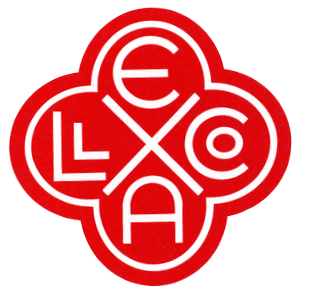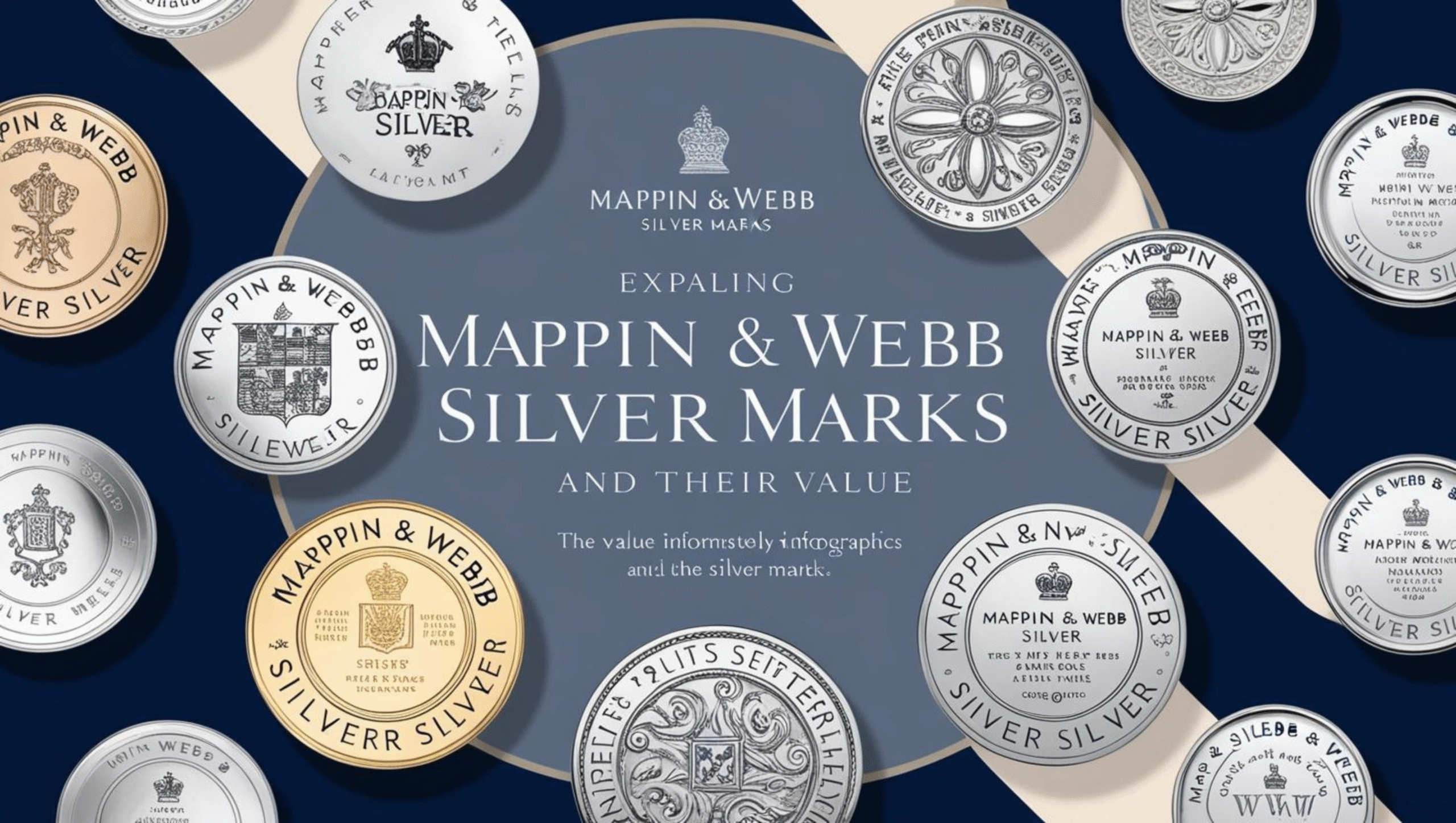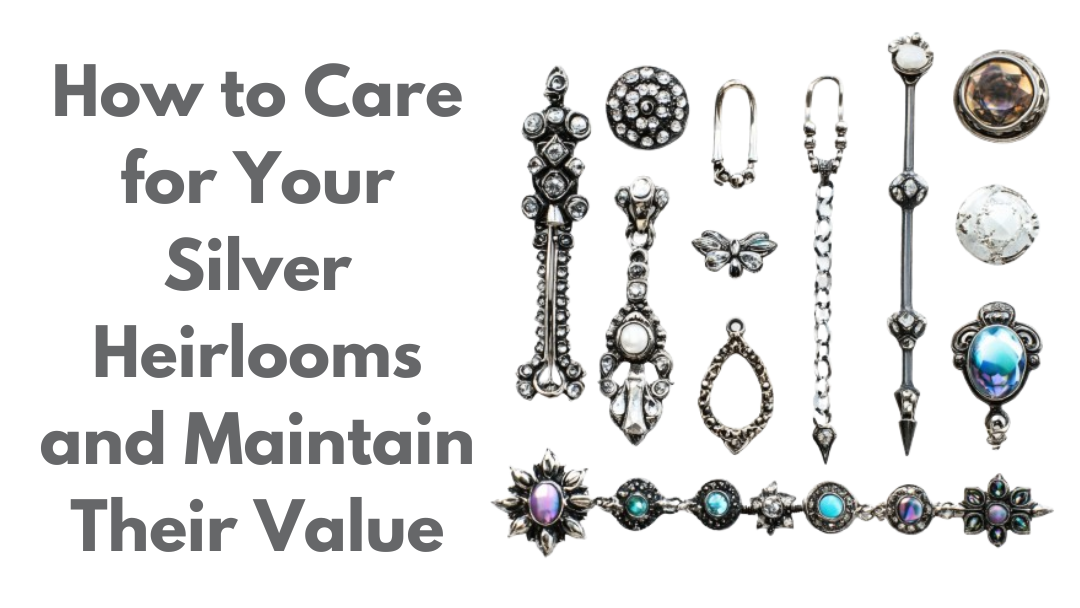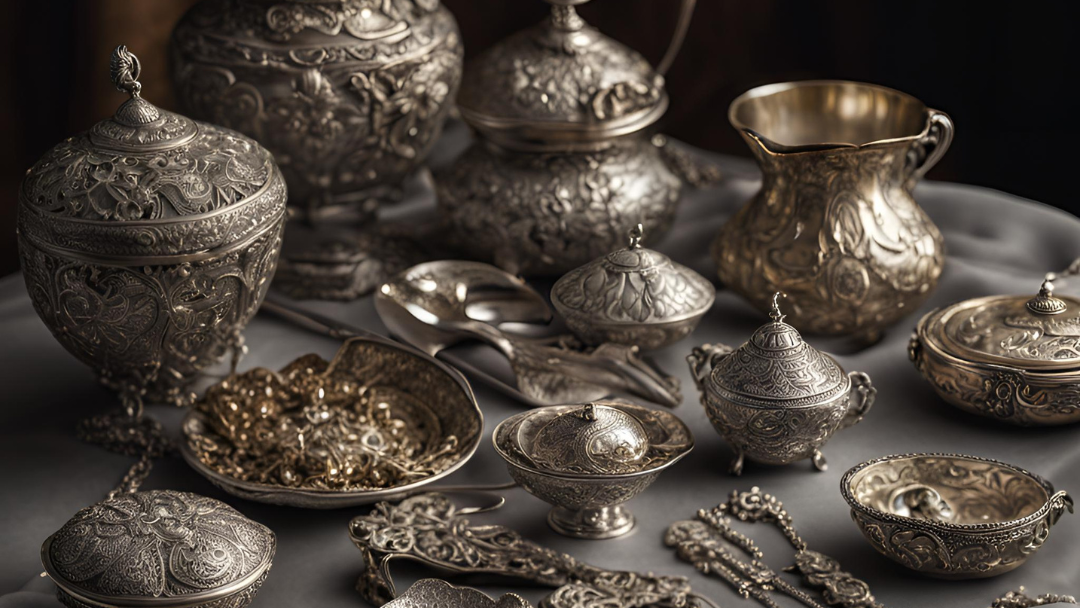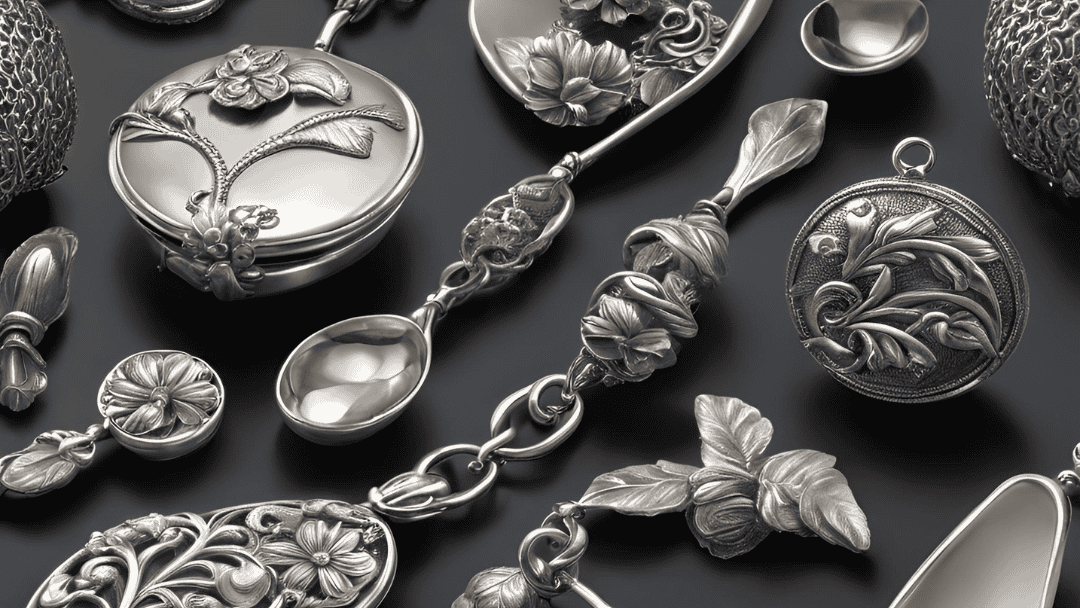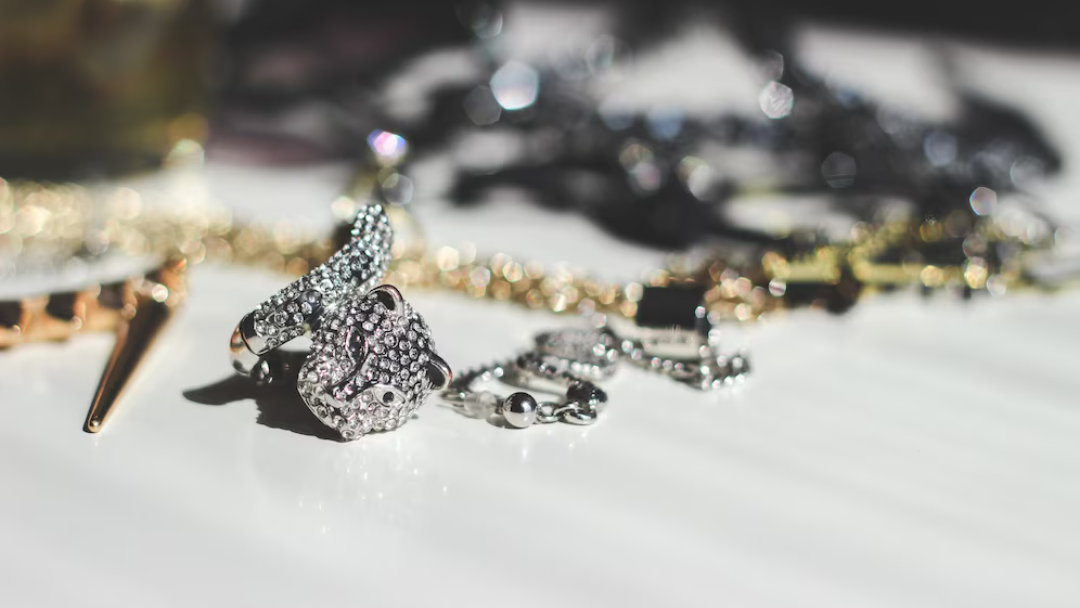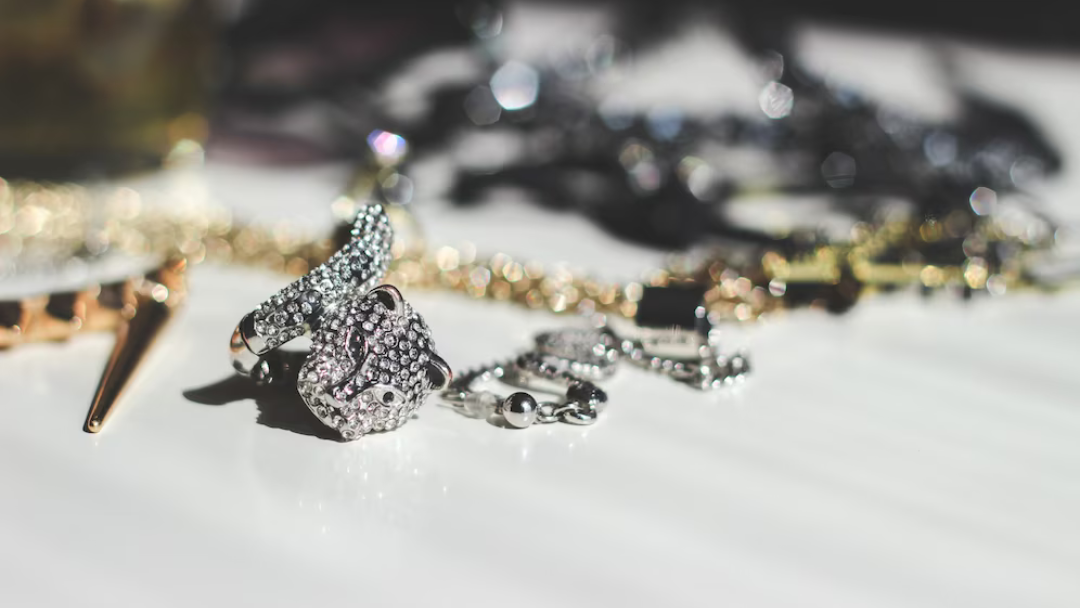
That sleek silver cocktail shaker at the antique market. The ornate tea set that appeared in a forgotten corner of the estate auction. The elegant flatware set with the mysterious stamps on the back. Silver pieces with Mappin and Webb silver marks have a way of captivating collectors and casual buyers alike, but their true value remains a mystery to most.
In today’s thriving vintage and antiques market, where shows like Antiques Roadshow and Pawn Stars have turned everyday people into amateur appraisers, understanding the significance of maker’s marks has never been more relevant. This guide cuts through the confusion surrounding Mappin and Webb silver marks and helps determine whether that silver piece is a genuine treasure or simply a well-crafted conversation starter.
Legacy Behind the Mark: Mappin & Webb’s Historical Significance
The weight of history gives Mappin and Webb silver marks their prestige. Founded in 1775 in Sheffield, England, the company emerged during Britain’s industrial revolution and the rise of the middle class. What began as a modest workshop evolved into one of the most prestigious silversmithing operations in Europe, eventually securing Royal Warrants from the British monarchy.
This historical foundation matters when evaluating silver pieces. A Mappin & Webb item isn’t merely silverware—it’s a tangible connection to an era when craftsmanship defined luxury and social standing. The company supplied silver to ocean liners (including the ill-fated Titanic), furnished royal palaces, and created diplomatic gifts exchanged between world leaders.
This heritage explains why collectors search specifically for Mappin and Webb silver marks when building their collections. Few silversmiths can claim such consistent prestige across nearly 250 years of continuous operation.
Language of Hallmarks: Decoding Mappin and Webb Silver Marks
Silver hallmarks function as a sophisticated identification system, and Mappin and Webb silver marks follow specific patterns that reveal crucial information about each piece. Understanding this visual language transforms the evaluation process.
The Primary Maker’s Mark
The foundation of identification begins with these variations:
- “M&W” – The standard mark used throughout much of their history
- “M&W Ltd” – Used after the company became a limited liability corporation in 1889
- “Mappin & Webb” – The full name appears on certain specialty pieces
- “Mappin Bros” – The earliest mark (1810-1860), predating the Webb family partnership
Purity Standard Marks
British silver adheres to strict purity requirements, indicated by specific symbols:
- Lion Passant (walking lion) – The 925 sterling standard (92.5% silver)
- Britannia figure – The higher 958 standard (95.8% silver), rarer and typically more valuable
Date Letters
The British hallmarking system includes a letter representing the production year. This alphabetical cycling system changed design approximately every 20 years. For example, a lowercase “e” in a square shield indicates 1860, while the same letter in a different shield shape might represent 1905.
City Assay Marks
Different British cities had authorized assay offices, each with a unique symbol:
- Crown – Sheffield (Mappin & Webb’s original location)
- Anchor – Birmingham
- Leopard’s head – London
Additional Marks
- Duty marks (sovereign’s head) appeared during tax periods (1784-1890)
- Pattern numbers specific to Mappin & Webb designs
- Special commemorative marks for royal occasions
Rare Silver Marks That Command Premium Prices
Not all Mappin and Webb silver marks carry equal value. Certain hallmark combinations signal potentially significant value to knowledgeable collectors and dealers.
Pre-1860 Marks
The earliest “Mappin Bros” marks represent the company’s formative period before the partnership with the Webb family. These rare silver marks typically appear on Georgian and early Victorian pieces, which remain highly sought after by serious collectors. Their scarcity and historical significance can multiply the base value several times over.
Special Commission Hallmarks
Throughout their history, Mappin & Webb created bespoke pieces for institutional and significant clients. These special commissions often feature unique pattern numbers or additional marks indicating their provenance:
- Royal household commissions (identified by specific pattern numbers)
- Military mess hall silver (may include regimental marks)
- Commissioned pieces for luxury ocean liners
- Diplomatic presentation silver
Export Market Variations
Mappin & Webb created specialized silver for different international markets, particularly during the height of the British Empire. These pieces feature modified hallmarking:
- Australian market silver (often with additional local marks)
- Colonial Indian silver (may include Raj-era symbols)
- South American export silver (particularly for Argentina and Brazil)
These export variations with their unique Mappin and Webb silver marks often appeal to collectors in those specific regions, potentially commanding higher prices in those markets.
The Silver Plate Question: Managing Expectations
The most common disappointment when evaluating Mappin & Webb pieces stems from confusion between sterling silver and silver plate. The company produced exceptional quality in both categories, but the value difference is substantial.
Sterling vs. Plate Identification
Sterling silver (92.5% pure silver) will always include the lion passant mark alongside Mappin and Webb silver marks. Without this critical hallmark, the piece is almost certainly silver-plated.
Silver-plated pieces typically carry these designations:
- “EPNS” (Electroplated Nickel Silver)
- “EP” (Electroplated)
- “A1” (their highest quality plate grade)
While quality silver plate demonstrates the same design aesthetics as sterling pieces, the value typically ranges between 5-15% of comparable sterling items. This significant difference makes accurate identification essential before any serious valuation.
Market Value Factors: Beyond the Hallmarks
While Mappin and Webb silver marks provide the foundation for authentication, multiple factors influence actual market value:
Form and Function
Certain forms consistently command higher prices:
- Complete tea and coffee services ($2,000-8,000 for sterling sets)
- Large serving trays and centerpieces ($800-3,000 depending on size and age)
- Candelabras and substantial decorative pieces ($1,000-5,000)
- Complete flatware services for 12 ($1,500-6,000)
By contrast, individual spoons, small dishes, and common items like napkin rings typically bring more modest returns unless exceptionally rare or historically significant.
Design Period
The period aesthetic significantly impacts collector interest:
- Georgian and early Victorian (1775-1860): Highest premium for authentic pieces
- Late Victorian (1860-1900): Strong value, particularly for ornate designs
- Art Nouveau and Art Deco (1900-1940): Renewed collector interest, especially for clean-lined modern designs
- Mid-century (1940-1970): Generally lower values except for specific design collaborations
- Contemporary: Primarily retail value only
Condition Considerations
Even rare silver marks can’t overcome condition issues:
- Dents and deep scratches significantly reduce value
- Repairs, especially poor quality ones, can diminish value by 40-70%
- Monograms and engraving typically reduce value by 15-30% (unless historically significant)
- Mismatched pieces in sets drastically reduce set premium
Documentation and Provenance
Authenticated history adds substantial value:
- Original fitted boxes can add 20-40% to value
- Original purchase receipts provide valuable dating confirmation
- Documented ownership by notable individuals can multiply standard values
The Professional Evaluation Advantage
While this guide provides a foundation for understanding Mappin and Webb silver marks, professional evaluation remains the gold standard for accurate valuation. Expert appraisers like those at Eagle Coins Gold and Silver Buying bring specialized knowledge:
- Access to comprehensive hallmark identification resources
- Experience with thousands of comparative examples
- Current market condition awareness
- Authentication expertise for detecting forgeries or alterations
A professional evaluation provides concrete advantages when:
- Insurance documentation is required
- Estate division needs objective valuation
- Potential museum-quality pieces are identified
- Significant financial decisions depend on accurate valuation
Investment Potential: Collectible vs. Commodity
Mappin & Webb silver occupies an interesting position in today’s market—simultaneously valuable for its silver content and its collectible status. This dual nature requires strategic thinking when purchasing or selling.
Silver Content Value
As a precious metal, silver has intrinsic commodity value. At current market rates, sterling silver (92.5% pure) is worth approximately $0.70-0.90 per gram as raw material. A typical Mappin & Webb sterling teapot might contain 500-800 grams of silver, giving it a minimum “melt value” of $350-720.
However, this commodity approach typically undervalues quality silver. Except for damaged or common pieces, Mappin & Webb items almost always command prices well above their raw material value.
Collectible Premium
The collectible premium for Mappin and Webb silver marks varies dramatically:
- Common 20th century patterns: 1.5-2x silver value
- Victorian ornate designs: 3-5x silver value
- Rare early patterns: 5-10x silver value
- Museum-quality pieces: 10-20x silver value or more
This premium explains why serious collectors focus on rare silver marks and exceptional pieces rather than common examples.
Authentication Challenges: Reproductions and Alterations
The prestige associated with Mappin and Webb silver marks has inevitably led to reproduction and falsification. Awareness of common authentication issues provides essential protection:
Common Red Flags
- Inconsistent hallmark sizing or alignment
- Hallmarks showing different wear patterns than the piece itself
- Maker’s marks without corresponding assay marks
- Assay office marks from cities that don’t match the time period
- Modern construction methods on supposedly antique pieces
Reputable Verification
When significant value is at stake, professional verification becomes essential. Expert authentication considers factors beyond visual inspection:
- Metal composition testing
- Ultraviolet examination for modern solder or repairs
- Microscopic hallmark analysis
- Pattern registration verification against company records
Making Informed Decisions About Your Silver
Whether considering a purchase or evaluating inherited pieces, strategic approaches yield better outcomes:
- Documentation First: Photograph all Mappin and Webb silver marks along with the complete piece
- Preliminary Research: Compare hallmarks to established reference guides
- Expert Confirmation: Seek professional verification for potentially valuable pieces
- Value Consideration: Weigh sentimental value against potential financial return
- Long-term Planning: Consider insurance, proper storage, and eventual legacy planning
For those holding potentially valuable Mappin & Webb silver, professional evaluation provides clarity and options. The specialists at Eagle Coins Gold and Silver Buying offer confidential assessments without obligation, helping owners understand both the historical significance and market potential of their silver treasures.

